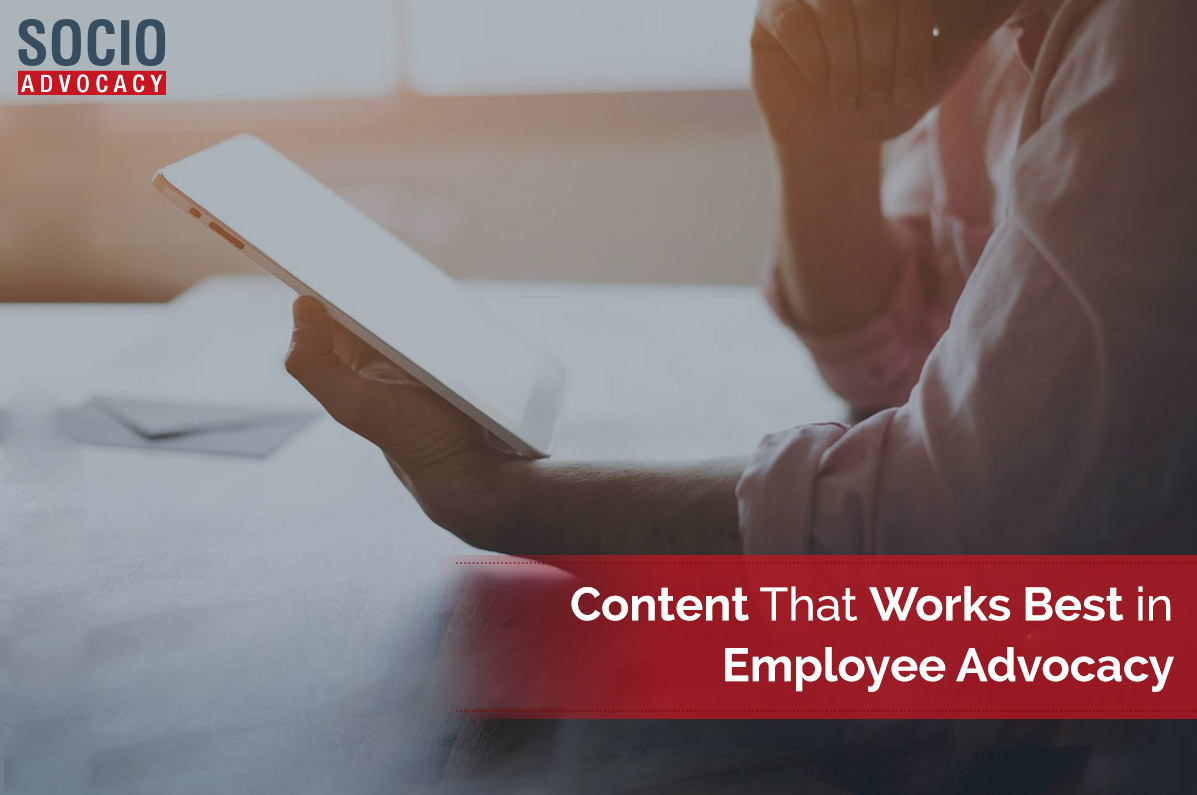Many companies wait until after they’ve implemented an employee advocacy program to ask – What content will work best? Unfortunately, the answer isn’t as simple.
The type of content that will work best for you lies with what the company’s objectives are. Is the aim of employee advocacy to promote marketing content or promote engagement on social media platforms? Or maybe you’re looking to cash in on recruitment opportunities? Drive traffic to your website or increase conversions?
You may have a strategy that covers many objectives. Now although it is not impossible, it can become rather confusing to manage several types of content on an employee advocacy platform – both for the employee and the administrator.
To help you get a better understanding of the options to source content for your employee advocacy program, we’ve expounded on a few. By evaluating the pros and cons of each, you can narrow down on the one you want to go with.
1. Third Party Site Content
Sometimes it’s great to share insights from other websites. Brand content is great, but employees may not always want to share company content all the time. Sometimes, a good read could do more than you think. It could not only improve your share rates but also make the reader learn a thing or two. Plus, sharing content from noteworthy sites, like Hubspot, enhances your brand’s credibility and widens your reach in the industry. This encourages other brand advocates to stay engaged with updates.
2. Marketing Content
Sharing content from a marketing perspective is a success only when it provides value to your employee advocacy program. Don’t be completely focused on your product. Rather, tell a story that employees would like to share. Employees shouldn’t be told to advertise for your company; they should want to do it on their own. The best way is when they share insights from the industry that supports your products and services.
3. Employee-Brand Content
Great way to build engagement and promote a positive work culture, it’s popular and widely used. Involving the stories that revolve around your employees, it shows your company in action. A fantastic example would be to share a video showcasing a day in the life of an employee – this, of course, could be done with various departments as part of an “Inside look at the company” series! You could also share images of team bonding activities. This shows the people behind the brand making it all happen. Potential job seekers are sure to be curious looking at this. It adds a more humane and personal touch to the brand.
4. Product Focused Content
One thing that can put people off your brand, is being too needy or pushy with a constant bombardment of product-focused promotions. Employees might be unlikely to share product content that’s pushy and in the end, connections might tune out. That being said, it’s not totally useless. Well timed product promotions can be beneficial. Prospects especially might find product-focused content to their advantage. New product launches deserve to be communicated far and wide and you want your audience to be the first to know.
5. Watercooler Content
Try to get to know your audience better by asking them open-ended questions. Put up a few puzzles related to your product. Put up a few quotes and facts. The goal over here is to post engaging but relaxing content. It shouldn’t feel like you’re only talking about your product. Add some diversity to your content.
The above content types will take some time to gain engagement but are sure to bring some life into your employee advocacy program.

